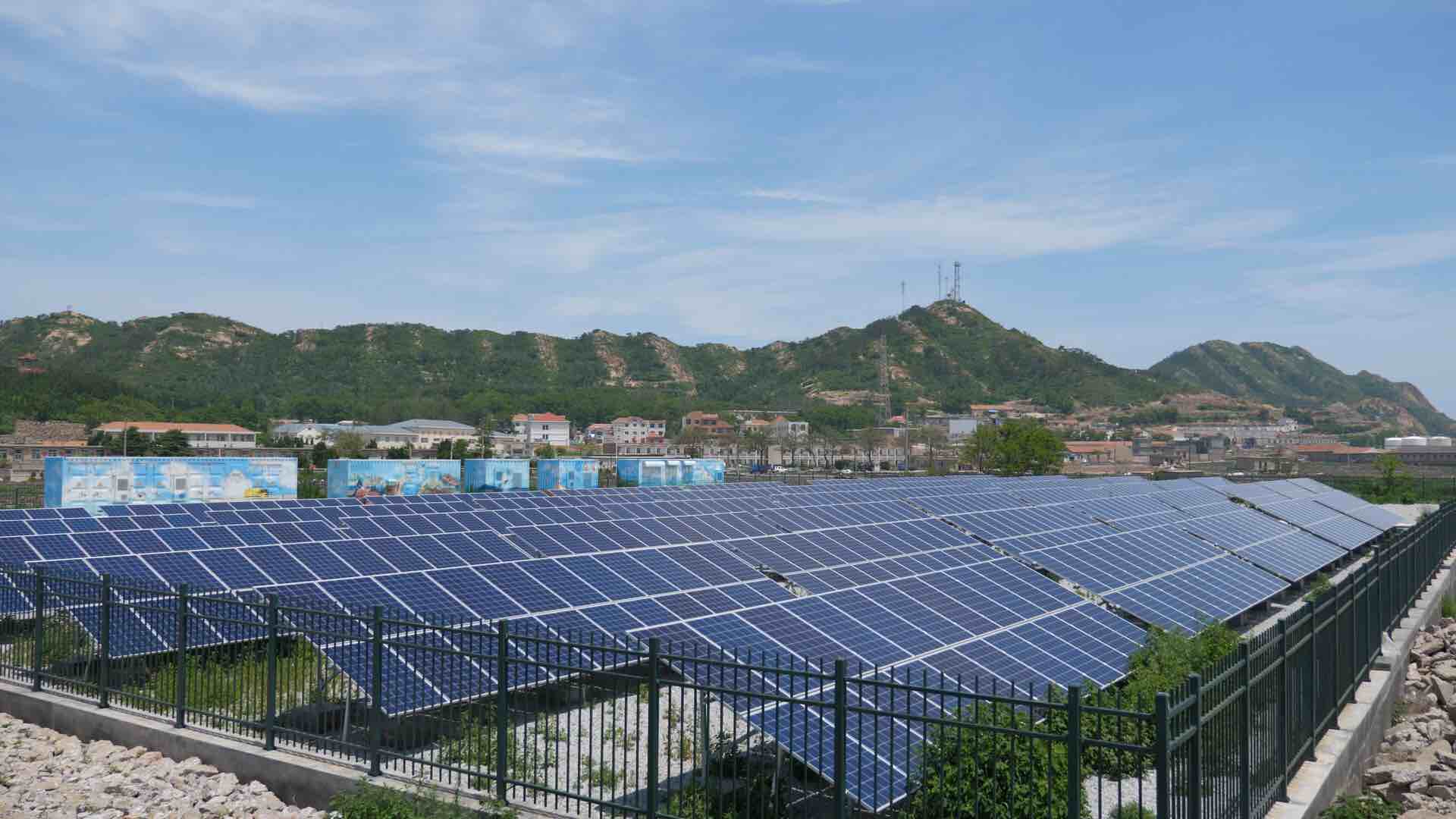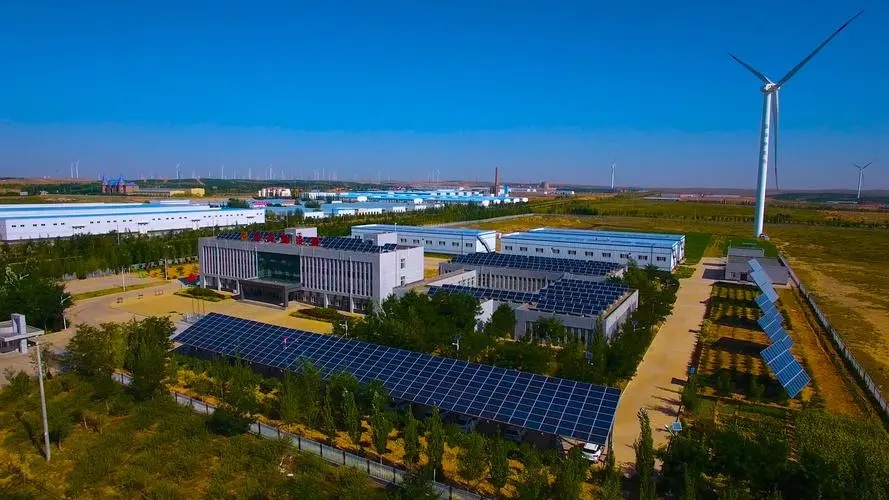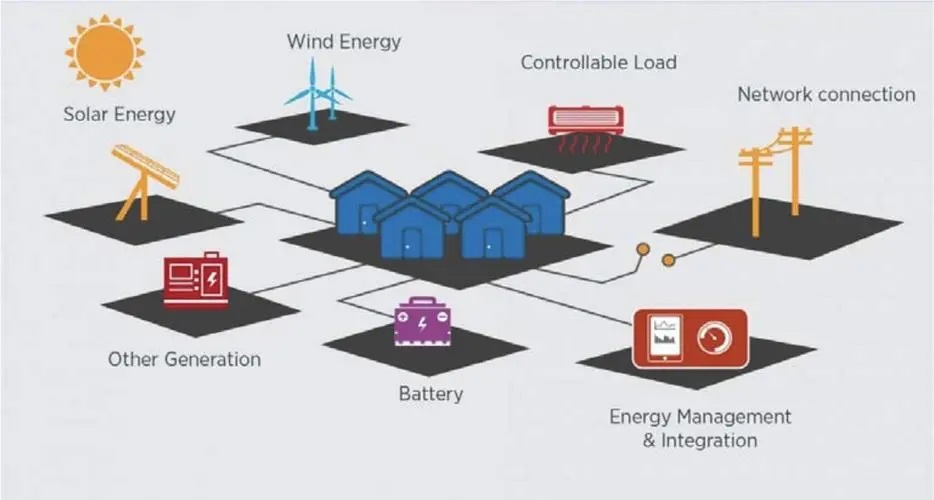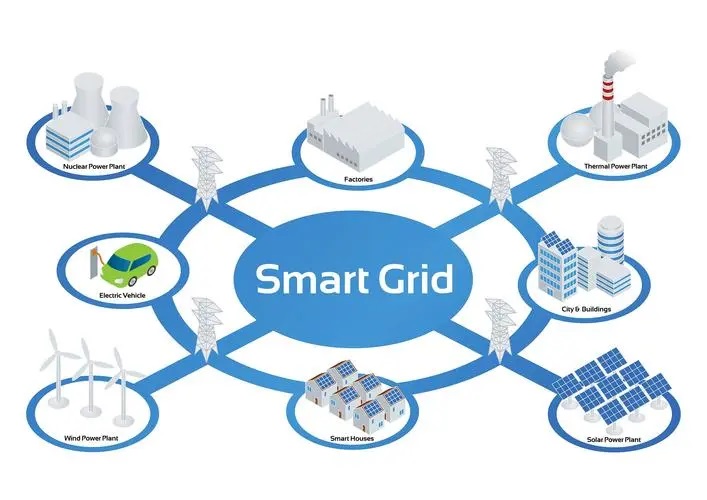In our pursuit of energy solutions solar microgrids have emerged as an innovative and efficient option. As we explore the world of microgrids it's crucial to understand their significance in todays energy landscape.

To grasp the workings of a microgrid it's important to comprehend the basics of energy generation. Solar power, derived from harnessing the suns rays offers an environmentally friendly source of electricity. Advances, in technology have made it a significant player in the shift towards clean energy.
Microgrids serve as components of energy distribution and come in various forms, including isolated systems, grid connected setups and hybrid configurations. These localized energy systems provide communities with self sufficiency and resilience during grid failures or emergencies.
Solar microgrids consist of essential elements. Photovoltaic (PV) modules, also known as panels are responsible for capturing sunlight. Converting it into electricity. Energy storage systems, typically using batteries store excess energy for use, during periods when sunlight is limited.
Inverters play a role, in converting current (DC) electricity into alternating current (AC) making it usable for both households and industries. Control systems are responsible for managing the energy flow within the microgrid to ensure utilization. In some cases backup generators are integrated to ensure power supply.
Now lets dive deeper into understanding how solar microgrids work;

Solar microgrids begin their operation by generating energy. Photovoltaic (PV) modules, also known as panels are strategically installed in areas with sunlight exposure. These panels consist of semiconductor materials like silicon that absorb photons from sunlight. When sunlight hits the cells it stimulates electrons. Creates an electric current. This initial form of energy generated by panels is, in the form of current (DC) electricity.
Solar microgrids often incorporate energy storage systems, batteries to store any energy produced during periods of high sunlight. The DC electricity generated by panels is directed towards these batteries where it gets stored as chemical energy.
Batteries, in microgrids have been designed to store and release electricity ensuring a steady power supply even when there is no sunlight available such as during cloudy days or at night.
The energy stored in batteries can be distributed whenever needed. In microgrids there are components like charge controllers and inverters that oversee this process. Charge controllers regulate the charging and discharging of batteries preventing any damage from overcharging or excessive discharge. Inverters are responsible for converting the DC electricity stored in batteries into alternating AC) electricity, which is then used to power homes, businesses and other facilities.
In grid connected microgrids any excess energy generated by panels can be sent back to the electricity grid. This process is known as metering. Allows owners of solar microgrids to receive credits for the surplus electricity they contribute to the grid. When there is a demand for energy or when solar generation is low electricity can be drawn from the grid to supplement the power supply within the microgrid. This two way flow of electricity ensures an dependable energy supply, for the community.
Solar microgrids are specifically designed to handle situations where there is a surge, in energy demand or fluctuations. These microgrids combine panels with energy storage systems allowing them to meet energy demands even when solar generation is limited. The excess energy can be stored during periods of demand. Then used during peak loads ensuring a stable power supply and preventing any overloads on the microgrid system.
In times solar microgrids often incorporate energy management systems that utilize advanced algorithms and data analytics. These systems monitor factors in time such as energy consumption patterns, weather forecasts and grid conditions. By doing they can make decisions to optimize energy generation, storage and distribution. This ensures the operation of the microgrid while maximizing the use of energy and minimizing reliance on the main grid.
To fully grasp the impact that solar microgrids have on communities and the broader energy landscape it's essential to delve into their advantages, in detail.
One significant advantage of microgrids is their ability to provide reliability and resilience when it comes to energy supply.
By generating electricity these microgrids are not dependent, on power plants. This reduces the risk of blackouts caused by grid failures or natural disasters. In events solar microgrids can function independently ensuring facilities like hospitals, emergency shelters and communication centers have a reliable power supply. This helps protect safety and enables disaster response efforts.
Solar microgrids play a role in reducing carbon emissions and addressing climate change. By utilizing energy these microgrids generate electricity without burning fossil fuels thereby eliminating greenhouse gas emissions. This eco friendly approach aligns with initiatives to transition towards renewable energy sources while reducing our carbon footprint. It paves the way for a future for our planet.
Solar microgrids offer cost savings in the term. Once installed solar panels have operating and maintenance costs compared to power generation methods. Moreover solar microgrids can. Eliminate the need for fuel imports in remote or off grid areas resulting in significant financial savings, for communities.
Additionally these small scale power grids have the potential to boost employment opportunities thereby stimulating growth by fostering the development of a skilled workforce, in the renewable energy industry.
In developing regions and isolated areas solar microgrids play a role in empowering communities. They offer electricity access in locations where establishing power infrastructure is economically impractical. The availability of electricity paves the way for education, healthcare and economic prospects ultimately leading to living standards and poverty reduction. By nurturing the growth of businesses solar microgrids create an economic domino effect within these communities.

Solar microgrids are assets in regions to natural disasters. When calamities such as hurricanes or earthquakes occur traditional power grids often suffer damage leaving communities without electricity for periods of time. Solar microgrids equipped with energy storage systems can function independently from the grid supplying power to emergency services, relief shelters and communication networks. Their ability to be rapidly deployed and operate off grid makes them tools, in disaster preparedness and emergency response strategies.
Technological progress, in solar microgrid technology has resulted in improved access to energy for people living in rural areas alike. The use of components enables flexible installations making solar microgrids suitable for various settings and energy requirements. Additionally the introduction of pay as you go systems and mobile payment platforms has made solar energy more attainable, for low income households ensuring that marginalized communities can enjoy eco friendly electricity.
Lets discuss the challenges that arise when implementing microgrids and the innovative solutions that have been devised to tackle these issues;
Harnessing energy can be a challenge when sunlight is intermittent, in regions with unpredictable weather patterns. However there are solutions in place to address this challenge. Advanced lithium ion batteries and flow batteries have proven to be energy storage options. These batteries store energy generated during periods ensuring a continuous power supply even on cloudy days or at night. Ongoing research focuses on improving battery efficiency and exploring technologies like solid state batteries to enhance reliability while keeping costs reasonable.
Integrating microgrids into existing power grids can be complex due to differences in voltage, frequency and phase. To tackle this challenge smart inverters equipped with grid synchronization capabilities have been developed. These inverters automatically synchronize with the grid enabling energy exchange without any disruptions. Additionally advanced grid management systems and microgrid controllers facilitate transitions between grid connected and islanded modes while optimizing energy flow, for stability.

Maintaining microgrid systems can be quite a task, in remote or harsh environments. To address this we rely on technologies like enabled sensors and machine learning algorithms. These tools help us monitor the performance of panels, batteries and other components in time. By detecting anomalies and potential failures we can take proactive maintenance measures to minimize downtime. We also conduct training programs to empower technicians with the necessary skills for effective troubleshooting and repairs.
The successful adoption of microgrids heavily depends on policy and regulatory frameworks. Unfortunately many regions are still burdened by regulations that hinder their implementation. To overcome this challenge it is crucial to engage in advocacy efforts and foster collaborations between governments, energy regulators and private sector stakeholders. These partnerships can drive policy reforms that promote the use of financing models such as private partnerships or community based ownership. Such models help communities invest in microgrid projects, with reduced barriers.
The field of microgrids is constantly evolving with cutting edge advancements happening all the time.
Research and development efforts are focused on improving the efficiency of panels enhancing energy storage technologies and creating grid solutions. Additionally the integration of energy sources, like wind and hydropower in microgrid systems contributes to their reliability and resilience. As these innovations progress the future of microgrids holds potential for increased efficiency, affordability and sustainability. This paves the way for an more secure world in terms of energy.

By addressing these challenges with solutions the solar microgrid industry continues to make advancements towards a more sustainable and resilient energy future.
Now lets take a look at some specific case studies to gain an understanding of how solar microgrids are being implemented and the impact they are having on various communities around the world;
In villages across India access to electricity was once merely a distant dream until solar microgrids came into play. Organizations such as The Energy and Resources Institute (TERI) have implemented microgrid projects in states, like Bihar and Odisha. These microgrids have not brought electricity to homes. Also powered local schools and healthcare centers.
The advent of electricity has brought about improvements, in education, healthcare and economic activities in areas. It has transformed the socio fabric of these villages.
An excellent example of energy independence can be found in Freiburg, Germany. The citys residents, local utilities and businesses joined forces to establish a microgrid that spans across the entire city. By harnessing power through rooftop panels and efficient energy storage systems Freiburg now. Manages its own electricity supply. This pioneering initiative has substantially reduced the citys carbon footprint while providing sustainable energy to its inhabitants. Moreover it has inspired projects throughout Europe.
In the Maldives—a nation consisting of islands—achieving energy self sufficiency poses challenges. However by implementing microgrids on islands they have revolutionized their energy landscape. For instance on Thulusdhoo Island a solar microgrid has been established to provide electricity to homes, schools and businesses. This sustainable energy solution not reduces reliance, on diesel generators. Also helps preserve the islands pristine environment by promoting eco tourism and conserving local biodiversity.
Following the effects of Hurricane Maria in 2017 Puerto Rico confronted an energy crisis. In response non profit organizations and local communities joined forces to establish microgrids throughout the island. These microgrids, equipped with battery storage technology ensured that vital facilities like hospitals, emergency shelters and communication centers had a power supply during and after disasters. The resilience demonstrated by these microgrids not expedited the islands recovery but also served as a model for disaster preparedness.
In Kenya solar microgrids have played a role in promoting agricultural development. By providing electricity to power irrigation systems farmers can now cultivate their lands efficiently resulting in increased crop yields and economic growth. Furthermore these microgrids have facilitated the establishment of scale processing industries enabling farmers to process and sell their produce locally. This has effectively reduced harvest losses while enhancing overall food security within the region.
These real life examples illustrate the applications and positive influence of microgrids, across various settings. They exemplify how these grids can adapt and transform communities on both small scales
To sum up solar microgrids are a step, in our journey towards a sustainable energy future. By capturing the suns energy and utilizing energy management technologies they play a role, in modern energy systems. As we invest further in energy solutions it becomes imperative to embrace microgrids as not just an option but a requirement. This will lead us to an more resilient energy landscape.

扫码关注
We use cookies to understand how our audience uses our site.
Renon Power websites use cookies to deliver and improve the website experience. See our cookie policy for further details on how we use cookies. Privacy Policy